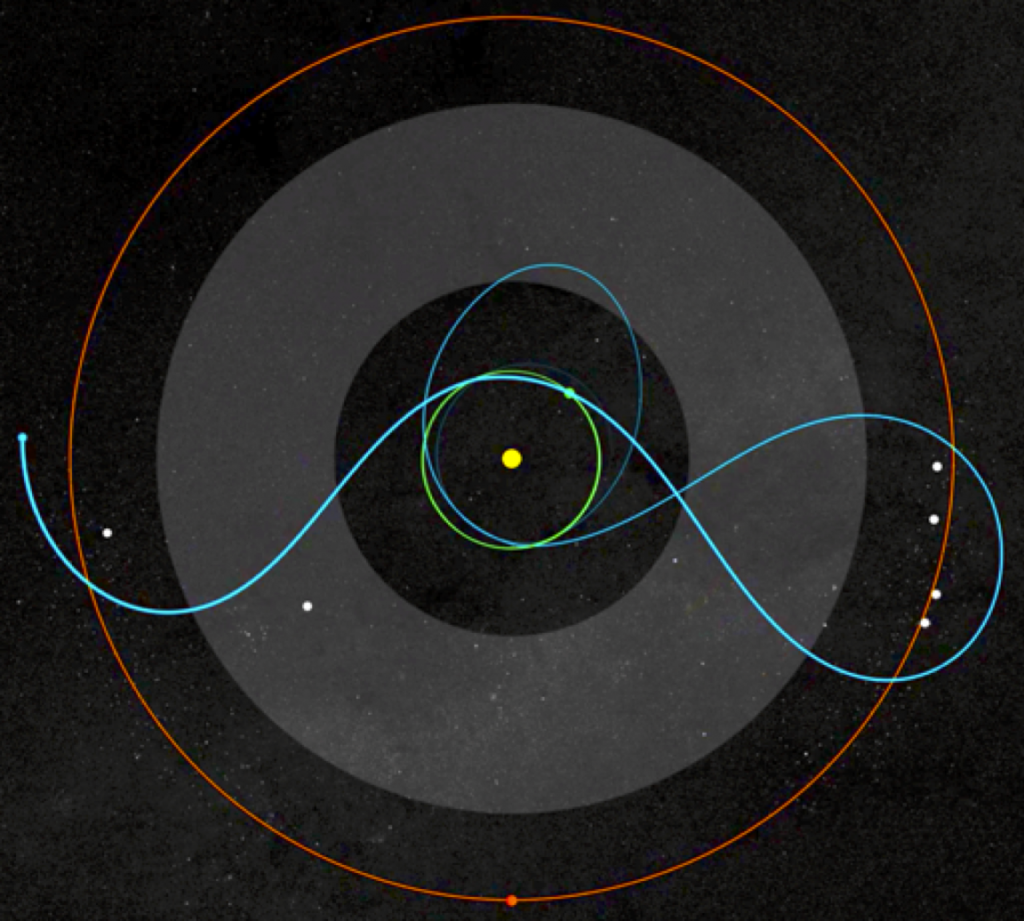Launched just last month, Lucy will be the first spacecraft to visit Jupiter’s trojan asteroids, rocky swarms that orbit about 60 degrees ahead and behind Jupiter in its orbit. Hal Levison, Lucy’s Principal Investigator, has described Lucy’s complicated trajectory, which includes an Earth gravity-assist and visits to both trojan swarms, as “part science, part art, and part luck”.
Named after the Lucy fossil that elucidates hominid history, Lucy will illuminate solar system history as the trojans are thought to be pristine remnants of planetary formation. The Lucy fossil itself was named after The Beatles‘ song “Lucy in the Sky with Diamonds” and, indeed, Lucy’s thermal emission spectrometer includes a large diamond beam splitter. During its 12-year primary mission, Lucy will visit seven trojans, including a near-twin binary pair, and one tiny main-belt asteroid named after Donald Johanson, the discover of the Lucy fossil.


Thanks, Mark! I enjoy reading your posts as well.